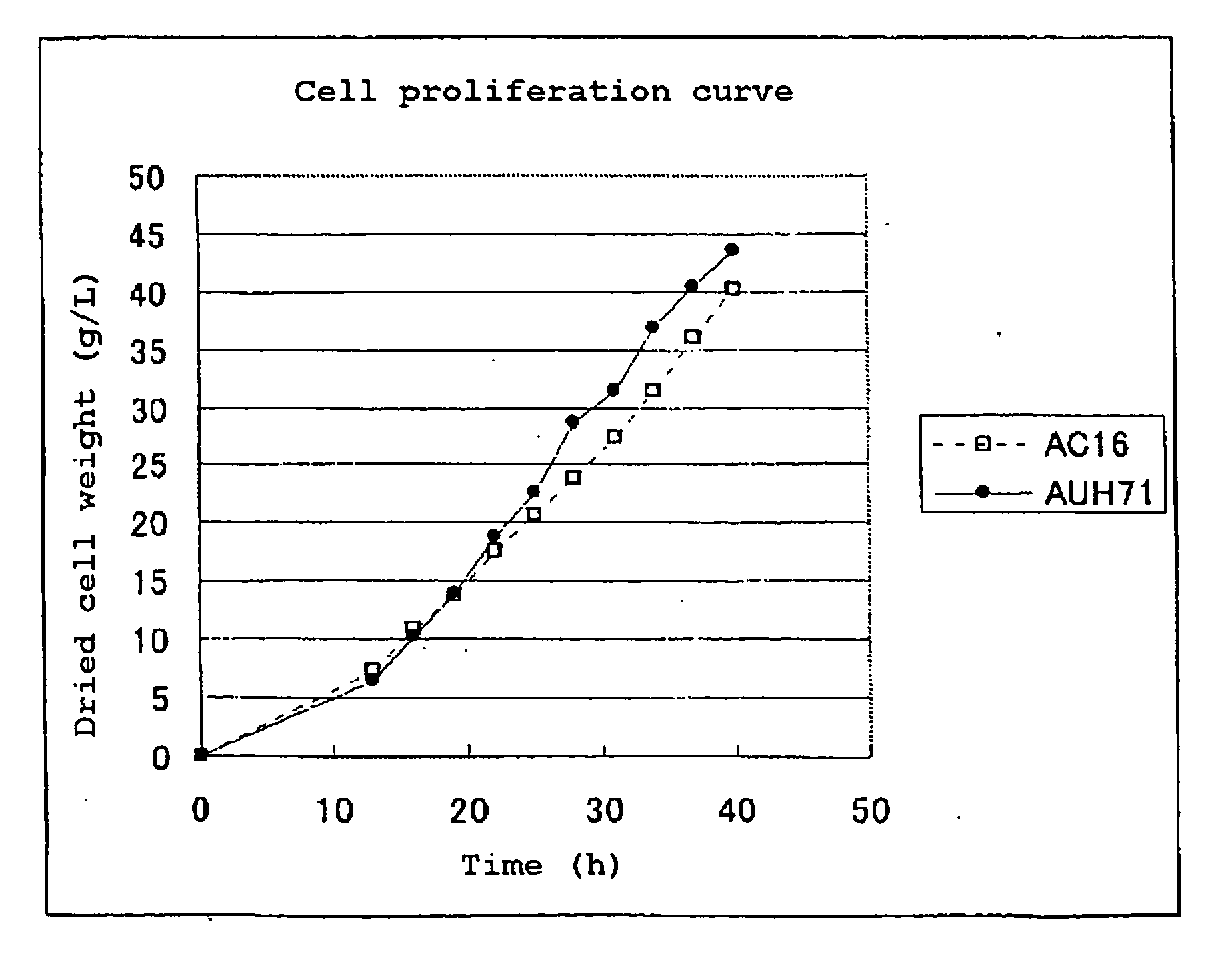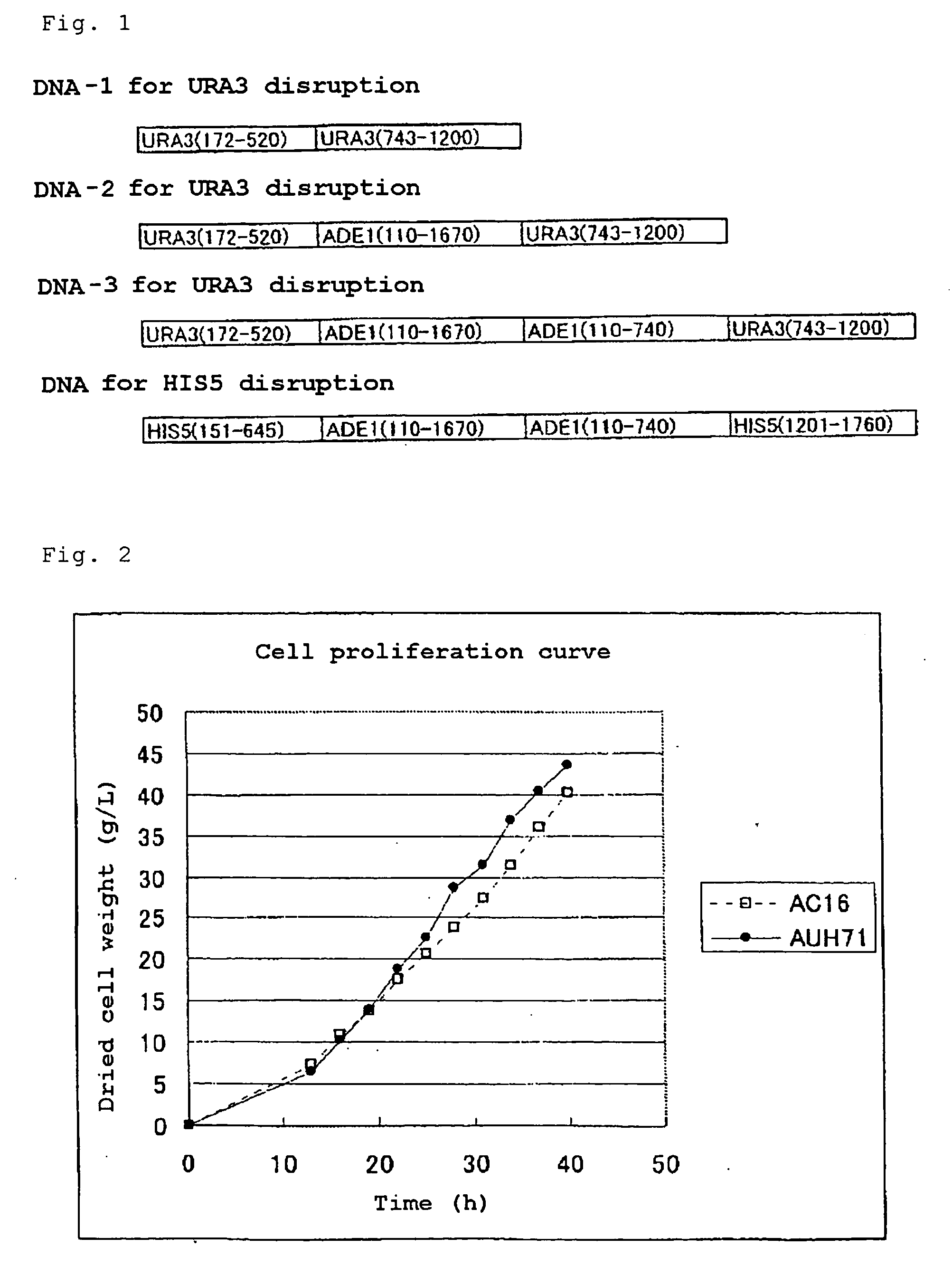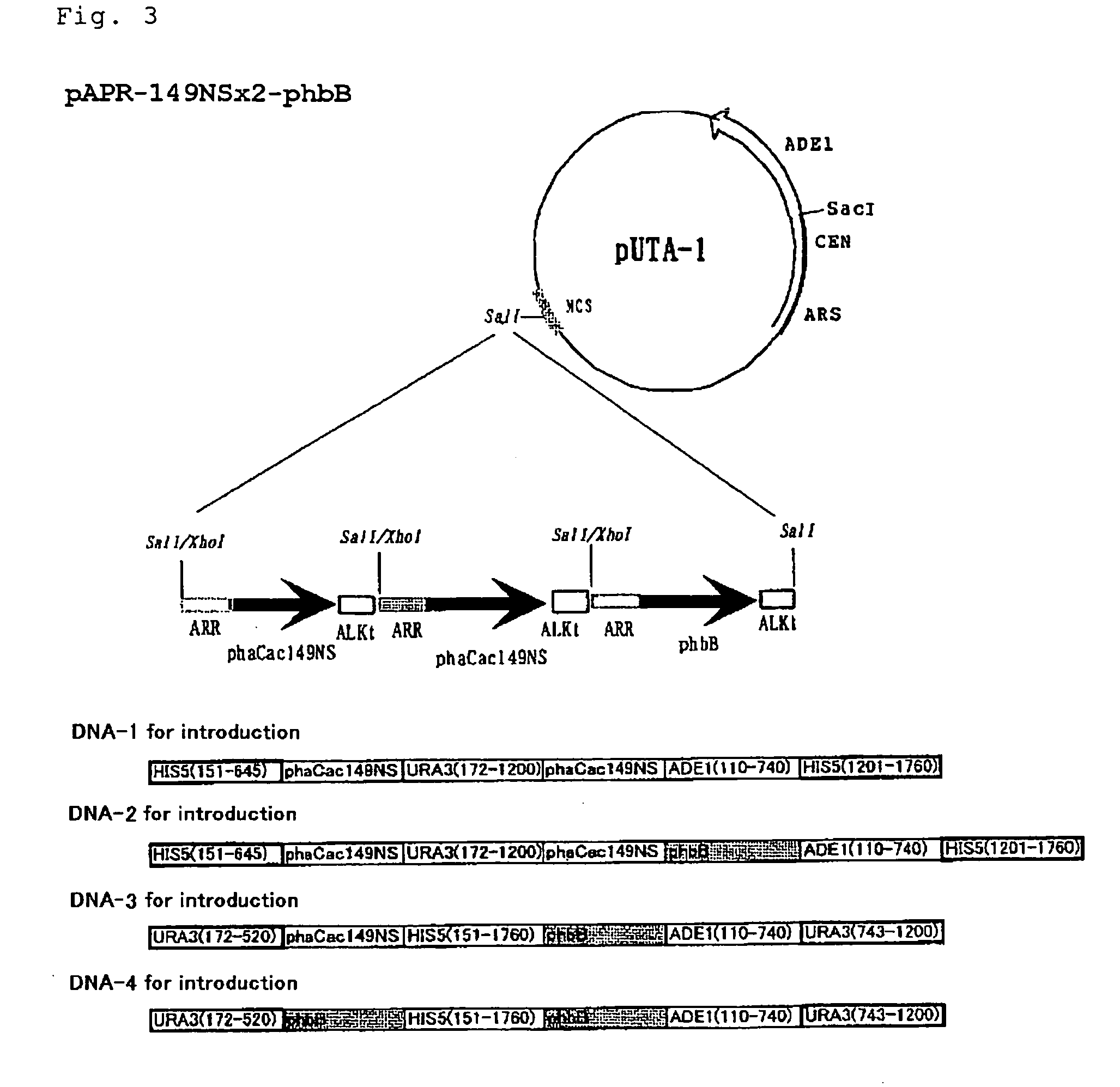Novel Transformant and Process for Producing Polyester Using the Same
- Summary
- Abstract
- Description
- Claims
- Application Information
AI Technical Summary
Benefits of technology
Problems solved by technology
Method used
Image
Examples
example 1
Production of a Complementary Vector, Gene for Disruption, and Marker Recovery Type Gene for Disruption
[0261]Vector pUTU-delsal in which SalI restriction enzyme site is disrupted in URA3 gene was produced from pUTU-1, which is a vector for Candida maltosa having URA3 gene as a marker imparted from Tokyo University, by using the primers (del-sal-5, del-sal-3) as shown under SEQ ID No:8 and 9 with a quick change kit produced by Stratagene. From this pUTU-delsal, URA3 gene was cut with SalI and XhoI, and plasmid pUTU-2 in which the cut fragment was introduced into XhoI site of pUTU-1 again was produced. ADE1 gene on pUTA-1 (disclosed in WO 01 / 88144) was cloned to XhoI site of pUTU-2 to produce pUTU-2-Ade. To SalI site of a multicloning site of pUTU-1, HIS5 gene cloned to pUC119 was cloned to produce pUTU1-His. Furthermore, to SalI site of a multicloning site of pUTU-2-Ade, HIS5 gene was cloned to produce pUTU-2-Ade-His.
[0262]To SphI-SalI site of plasmid pUC-Nx prepared by converting a ...
example 2
Disruption of URA3 Gene of AC16 Strain
[0266]The AC16 strain was cultured in YPD medium with a 10 ml large test tube overnight. This precultured yeast was inoculated on YM medium so as to be 1 ml / 100 ml in a Sakaguchi flask, cultured for 6 hours, and cells were collected. The cells were suspended in 20 ml of 1 M sorbitol, and washed 3 times. Finally, the cells were suspended in 0.5 ml of 1 M sorbitol and used as competent cells. To 0.1 ml of the competent cells, 0.1 mg of DNA prepared by subjecting the plasmid containing DNA-2 for URA3 disruption of Example 1 to the restriction enzyme treatment with SphI and SwaI, and gene introduction by an electric pulse method was carried out. After applying electric pulse, 1 ml of 1 M sorbitol was put into a cuvet, the resultant was left under ice for 1 hour, and sown on SD plate. From the colony appeared, chromosomal DNA was extracted using a chromosome extraction kit Gentle-kun (product of TAKARA SHUZO CO., LTD.). Each 5 μg of the obtained chro...
example 3
HIS5 Gene Disruption in AC16 Strain and Method for Recovering a Marker
[0270]Competent cells were prepared from the U-1 strain produced in Example 2, added with 0.04 mg of DNA prepared by treating a plasmid containing DNA for HIS5 disruption with restriction enzymes SphI and SwaI and purifying the resultant, and then subjected to gene introduction by the electric pulse method. The conditions were the same as in Example 2. These cells were spread on a histidine-containing SD plate, and incubated at 30° c. Genomic DNA was collected from the appeared colony. Amplification of genomic DNA was carried out using the primers of flanking site of the portion having homology with HIS5 gene of the gene for disruption in HIS5 gene, that is his-sal2 and his-1900 (SEQ ID No:26 and 27), which are primers of HIS5 gene not contained in the gene for disruption. Then, a strain in which a band of 1.9 kbp, which is a size of intact HIS5 gene, and a band of 3.4 kbp, which is a size of DNA for HIS5 disrupti...
PUM
| Property | Measurement | Unit |
|---|---|---|
| Fraction | aaaaa | aaaaa |
| Fraction | aaaaa | aaaaa |
| Fraction | aaaaa | aaaaa |
Abstract
Description
Claims
Application Information
 Login to View More
Login to View More - R&D
- Intellectual Property
- Life Sciences
- Materials
- Tech Scout
- Unparalleled Data Quality
- Higher Quality Content
- 60% Fewer Hallucinations
Browse by: Latest US Patents, China's latest patents, Technical Efficacy Thesaurus, Application Domain, Technology Topic, Popular Technical Reports.
© 2025 PatSnap. All rights reserved.Legal|Privacy policy|Modern Slavery Act Transparency Statement|Sitemap|About US| Contact US: help@patsnap.com



